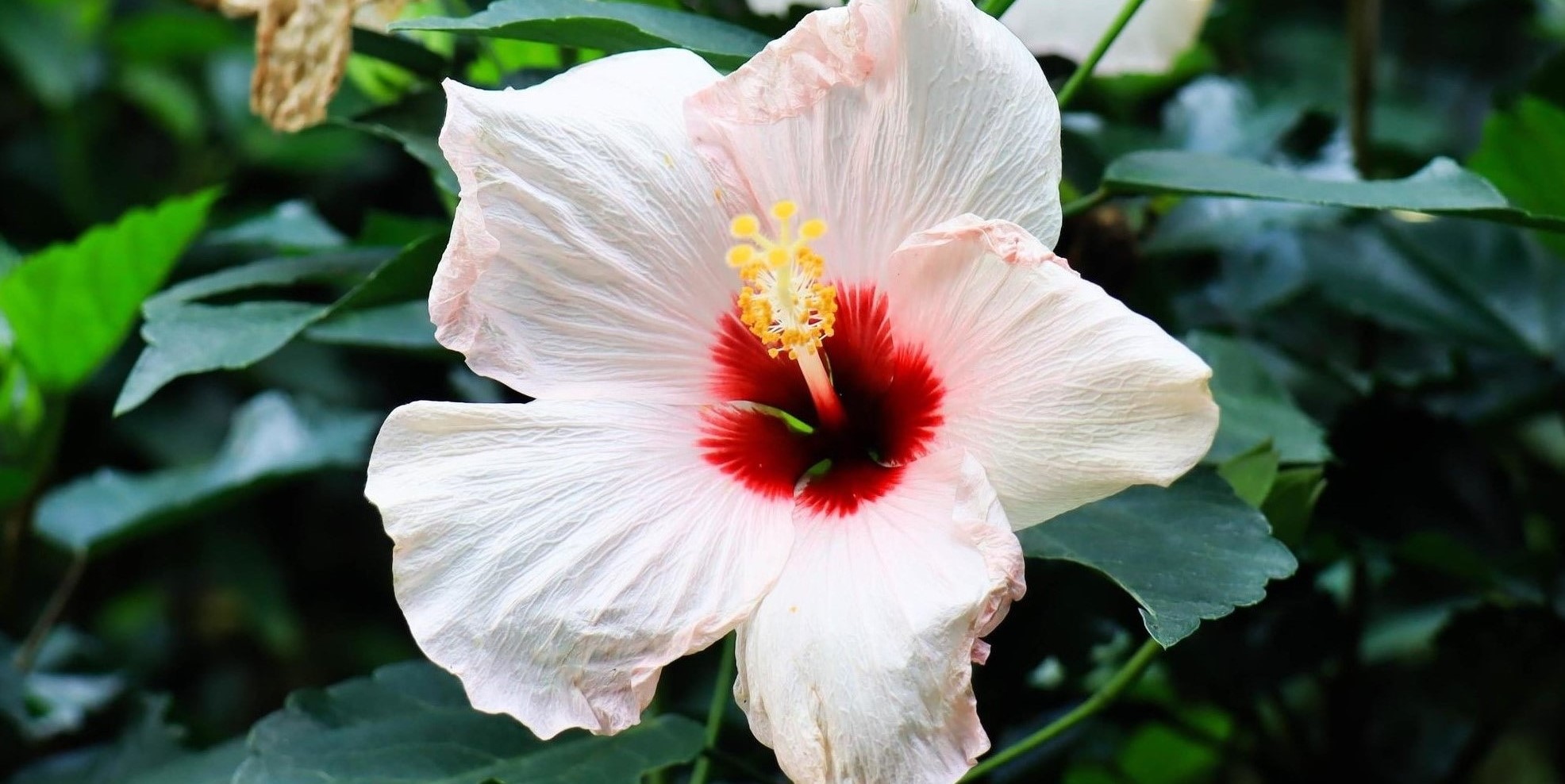
Hibiscus rosa-sinensis, also known as the Chinese hibiscus, is a fascinating and beautiful flowering plant that has captivated gardeners and plant enthusiasts around the world. This stunning tropical plant is known for its vibrant and showy flowers, which come in various colors and sizes. However, there is much more to Hibiscus rosa-sinensis than meets the eye.
In this article, we are going to uncover 15 intriguing facts about Hibiscus rosa-sinensis that will not only enhance your knowledge of this remarkable plant but also deepen your appreciation for its beauty and versatility. From its origins and cultural significance to its medicinal properties and use in culinary practices, get ready to discover the many secrets of this enchanting plant.
Key Takeaways:
- Hibiscus rosa-sinensis, also known as Chinese hibiscus, has a rich history, vibrant colors, and medicinal properties, making it a versatile and attractive addition to any garden.
- With its long blooming period, adaptability to various climates, and cultural significance, Hibiscus rosa-sinensis is a beautiful and beneficial plant for both gardeners and nature enthusiasts.
Ancient Origins
Hibiscus rosa-sinensis has a rich history dating back thousands of years. It is believed to have originated in Asia and was later introduced to other parts of the world.
Symbolism
In many cultures, Hibiscus rosa-sinensis holds symbolic meanings. It is often associated with beauty, love, and wealth, making it a popular choice for decorative purposes and traditional ceremonies.
Range of Colors
Hibiscus rosa-sinensis displays an impressive range of colors, including shades of red, pink, orange, yellow, and even white. This diversity adds to its appeal and versatility in garden landscaping.
Medicinal Properties
In traditional medicine, different parts of the hibiscus plant have been used for various purposes. Hibiscus rosa-sinensis is known for containing antioxidants and potentially offering health benefits such as reducing blood pressure and cholesterol levels.
Edible Flowers
While not all hibiscus plants produce edible flowers, some varieties of Hibiscus rosa-sinensis have petals that can be used to make herbal teas, jams, and even salads.
Attracts Pollinators
The vibrant blooms of Hibiscus rosa-sinensis attract a wide range of pollinators, including bees, butterflies, and hummingbirds. This makes it a great addition to any pollinator garden.
Wide Climate Adaptability
Hibiscus rosa-sinensis is a tropical plant but can adapt to a wide range of climates. It can be grown in both colder and warmer regions, making it accessible to gardeners worldwide.
Long Blooming Period
One of the most appealing characteristics of Hibiscus rosa-sinensis is its long blooming period. It can produce flowers for several months, bringing continuous beauty to any garden.
Versatile Plant
With its erect branches and glossy leaves, Hibiscus rosa-sinensis can be grown as a shrub, a hedge, or even a small tree. Its adaptability makes it suitable for various landscaping designs.
Drought Tolerance
Hibiscus rosa-sinensis is known for its ability to withstand drought conditions. It can tolerate periods of dryness, making it an excellent choice for gardens with limited water resources.
Hybridization
There are numerous hybrid varieties of Hibiscus rosa-sinensis available today, with breeders continuously working on creating new and unique cultivars. These hybrids often exhibit stunning color combinations and larger flower sizes.
Cultural Significance
Hibiscus rosa-sinensis holds cultural significance in many countries. It is the national flower of Malaysia and South Korea and plays a role in traditional ceremonies and celebrations.
Medicinal Uses in Ayurveda
In Ayurvedic medicine, Hibiscus rosa-sinensis is used to treat various ailments. Its leaves and flowers are believed to have properties that promote hair growth, aid digestion, and enhance overall well-being.
Easy to Propagate
Hibiscus rosa-sinensis can be easily propagated through cuttings. With proper care and propagation techniques, you can grow multiple plants from the same parent plant.
Cultural Usage in Beauty Products
Extracts from Hibiscus rosa-sinensis are used in various beauty products, including shampoos, conditioners, and skincare formulations. They are believed to have nourishing and anti-aging properties.
These 15 intriguing facts showcase the beauty, versatility, and cultural significance of Hibiscus rosa-sinensis. Whether you’re a gardening enthusiast or simply appreciate the aesthetics of this stunning flower, it’s hard to deny its allure.
Conclusion
In conclusion, Hibiscus rosa-sinensis, commonly known as hibiscus, is a fascinating and beautiful plant that has captured the interest of plant enthusiasts for centuries. With its vibrant blossoms, medicinal properties, and cultural significance, it has become a popular choice for gardens and landscapes around the world. From its ability to attract pollinators to its use in traditional medicine, the hibiscus plant offers a wide range of benefits and uses. Whether you’re interested in its ornamental value or its potential health benefits, the hibiscus plant is a true marvel of nature.
FAQs
1. How often should I water my hibiscus plant?
It is recommended to water your hibiscus plant once or twice a week, allowing the soil to dry slightly between waterings. However, be careful not to overwater, as it can lead to root rot.
2. Does hibiscus require full sunlight?
Yes, hibiscus plants thrive in full sunlight. It is ideal to place them in a location that receives at least six hours of direct sunlight per day.
3. Can I grow hibiscus in pots?
Absolutely! Hibiscus can be grown in pots, making them versatile for both indoor and outdoor spaces. Just ensure the pot has good drainage and use a well-draining potting mix.
4. How do I prune my hibiscus plant?
Hibiscus plants benefit from regular pruning to promote bushier growth and enhance flowering. Prune in late winter or early spring by removing old, dead, or overgrown branches.
5. Are all hibiscus flowers edible?
No, not all hibiscus flowers are edible. Hibiscus rosa-sinensis flowers are not typically consumed, but certain species like Hibiscus sabdariffa produce edible parts, such as the calyces, which are commonly used to make hibiscus tea.
6. Can hibiscus be propagated from cuttings?
Yes, hibiscus can be easily propagated from cuttings. Take a 6 to 8-inch cutting from a healthy, mature plant and remove the lower leaves. Plant the cutting in a well-draining potting mix, keeping it moist until roots develop.
7. Are hibiscus plants prone to pests and diseases?
Yes, hibiscus plants can be susceptible to pests such as aphids, whiteflies, and spider mites. They are also prone to fungal diseases like powdery mildew. Regular inspections and appropriate treatments can help keep your plants healthy.
Hibiscus rosa-sinensis captivates with its vibrant blooms and rich history, but this tropical beauty has even more to offer. From its medicinal properties to cultural significance, this plant continues to inspire and intrigue. If you're curious about other varieties, consider exploring the fascinating world of Chinese hibiscus. Uncover the unique characteristics and stories behind this stunning flower, and deepen your appreciation for the incredible diversity within the hibiscus family.
Was this page helpful?
Our commitment to delivering trustworthy and engaging content is at the heart of what we do. Each fact on our site is contributed by real users like you, bringing a wealth of diverse insights and information. To ensure the highest standards of accuracy and reliability, our dedicated editors meticulously review each submission. This process guarantees that the facts we share are not only fascinating but also credible. Trust in our commitment to quality and authenticity as you explore and learn with us.


